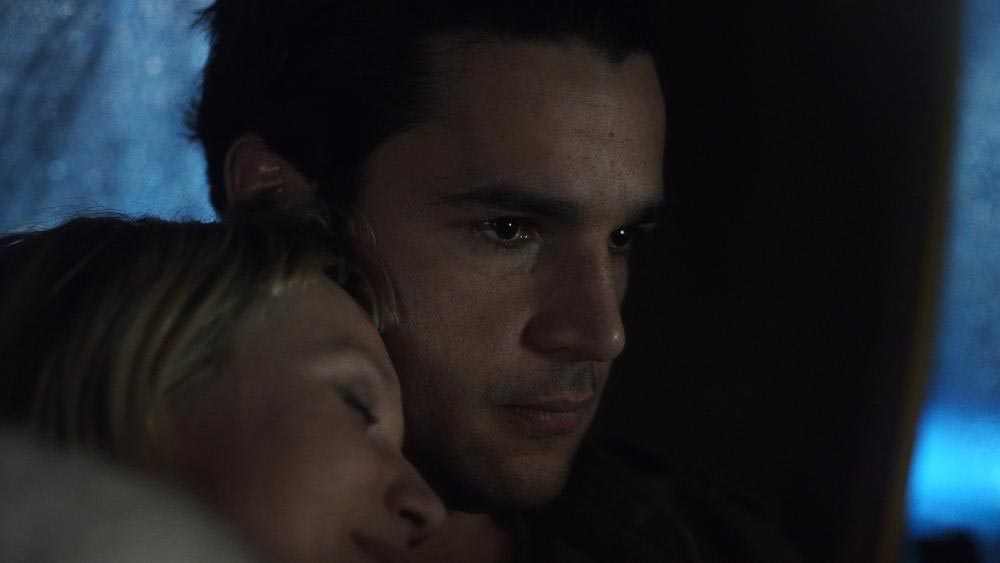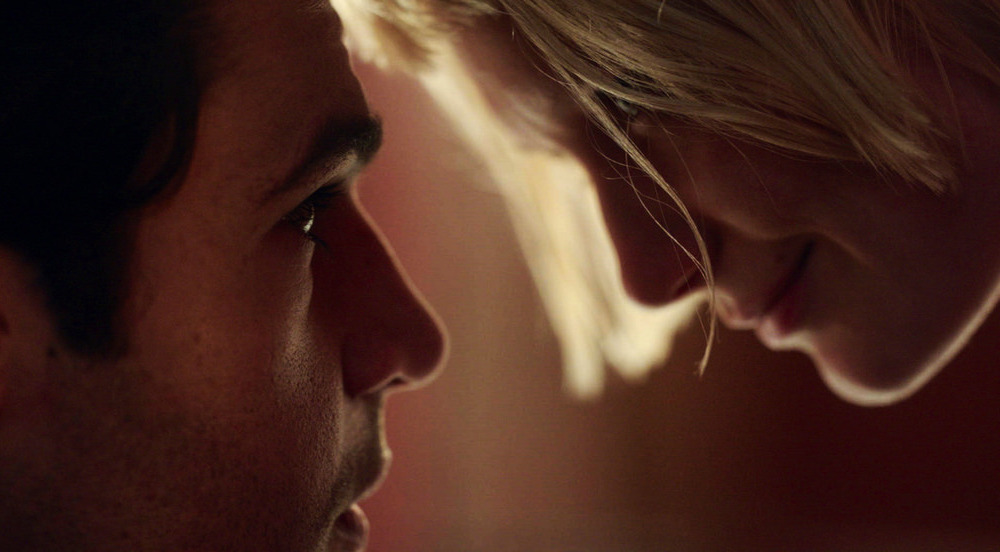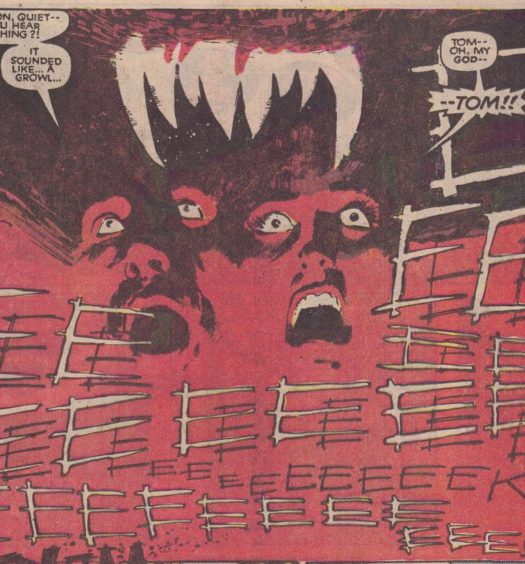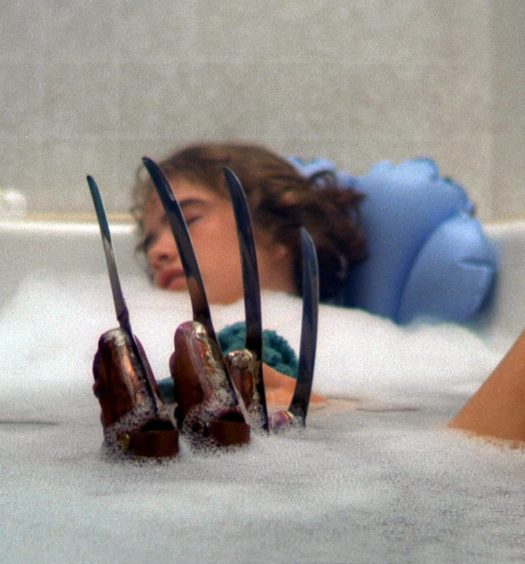“You have to believe that it won’t hurt” is the uncommon practice of releasing the body from pain by simply using one’s mind. Internalizing the pain without allowing your major extremities to harness concentrated negative energy has the potential to alter your mind and deter the sensation mentally. Whether we allow our bodies to accept pain organically or channel it through our nervous system, the constant factors we hold no control over are the numerous ways in which pain is inflicted. Nicolas Pesce’s (The Eyes Of My Mother) adaptation of Ryu Murakami’s dark novel, Piercing, electrifies a unique portrait of abuse and the ongoing effects of pain, deflected and received, when a nefarious exchange points south.

Pushing a crafted pin through the layers of heavy tones, mysterious energy, complex characters and the volatile setting they inhabit, Piercing makes one hell of a modern horror piece.
Piercing begins with new father and husband, Reed, steadily weakening to his freshly ignited bloodlust taunted by whispers and messages encouraging him to kill. In order to avoid taking a blade to his infant baby, Reed very carefully plans and prepares his homicidal release on a random woman. As his whimsies of bondage and slaughter come to fruition upon the arrival of mysterious call girl, Jackie, the scenario quickly changes gears. Control is essentially tethered to these two wounded victims of abuse, but relentlessly teases at who will succumb to the pain in the end.

He calibrates the suggested trauma these two victims hide below the surface with the representation of pain they inflict on others outwardly, serving the vicious ongoing cycle of pure abuse.
Piercing takes a typical narrative about an impending bloodlust and wraps it around a meaningful notion of cyclical psyche exchange between two characters. While it indulges lightly in sexual kink and wicked chemistry between Christopher Abbot (The Sinner) and Mia Wasikowska’s (Crimson Peak) driven, very well acted characters, Piercing is a true symphony of classic horror with an alternative mix of Korean and Italian influence. Invoking the real essence of giallo cinema and the application of dark humor resembling filmmakers like Park Chan-wook, this tale of two strangers is presented in modern retro noir fashion. With an obvious appreciation for the style of David Lynch and Quentin Tarantino, Pesce educates audiences using deep, comprehensive motifs while providing the visual substance and appropriately surreal atmosphere necessary for general entertainment.
Pesce’s fearless versatility in expression and technique proves he is able to define clear lines of emotion to siphon the raw horror from a story void of obviously frightening content like the supernatural or abundant gore.
Oddly enough, Piercing finds unlikely strength in the elements it lacks: there’s little to no use of blood, a singular location setting, the story is limited to two characters, and it carries purposely trite exposition followed by a final scene that arrives so abruptly you may find yourself doubting if it’s really ended. It’s remarkable to reflect on the absence of such major factors, but Pesce successfully draws on inspiration and creativity with timely precision. He elevates these intentional limits, withholding the techniques and material that would have potentially saturated Piercing in a negative manner. Pesce is aware that too much of a good thing is a bad thing the way overloading pain goes from feeling exquisite to unbearable. The player finding themselves in complete control at the end is the winner, and that rank ultimately goes to Pesce.

Piercing is a true symphony of classic horror with an alternative mix of Korean and Italian influence.
Particularly highlighting the director’s use of space, Piercing confidently takes control of a critical, yet confined setting. This portrays an effective dynamic between Reed and Jackie that is hyper focused, intensified, and violently dependent. His unique angles and perspectives toy with the limitations of one room, but magically add layers of dimension both visually and in meaning. Pesce’s fearless versatility in expression and technique proves he is able to define clear lines of emotion to siphon the raw horror from a story void of obviously frightening content like the supernatural or abundant gore. He calibrates the suggested trauma these two victims hide below the surface with the representation of pain they inflict on others outwardly, serving the vicious ongoing cycle of pure abuse.
With razor sharp edge, true film appreciation, and an adequate amount of inspiration balanced with eclectic style, Pesce easily brings one of Murakami’s most complex stories to the screen with ease. Pushing a crafted pin through the layers of heavy tones, mysterious energy, complex characters and the volatile setting they inhabit, Piercing makes one hell of a modern horror piece. One thing is for sure: his pointed application is refined and razor sharp. Piercing is a delicious rush of pain you want to feel.

‘Piercing’ Sticks Sharp Style Into A Brilliant Portrait of Abuse and Control [Review]
Sharp
Piercing is an intense, emotional portrait of abuse and control brought to stylistic life by Nicolas Pesce and the talents of Christopher Abbot and Mia Wasikowska, respectively. It exhibits a fresh control on the saturated elements of inspiration, while slowly needling relevant themes using brilliant emotion and manipulating classic horror mechanics to its advantage.
































